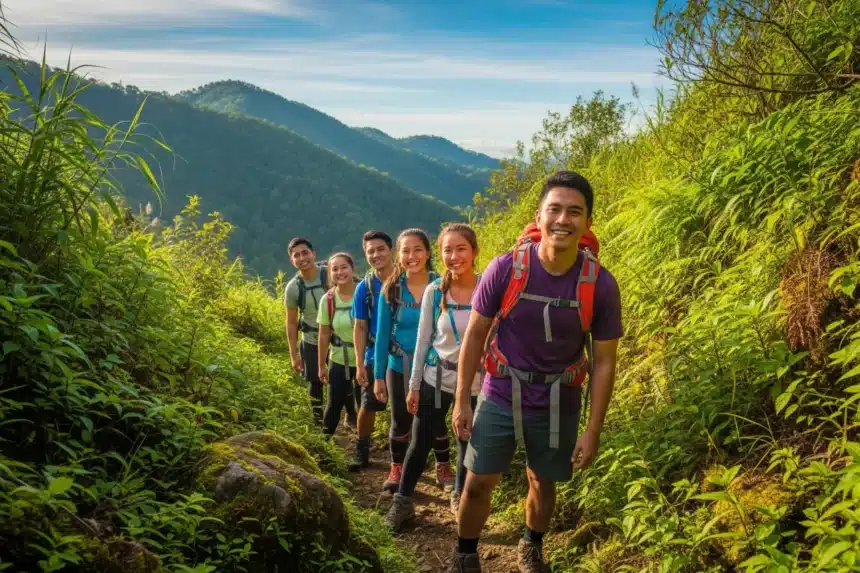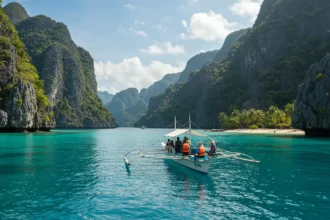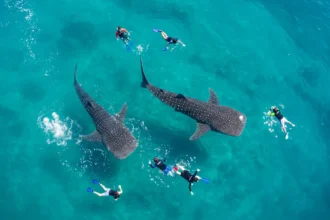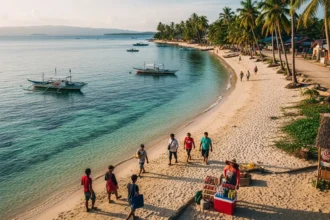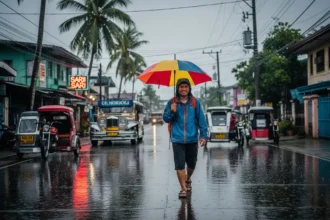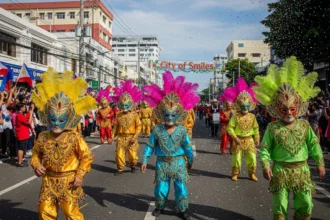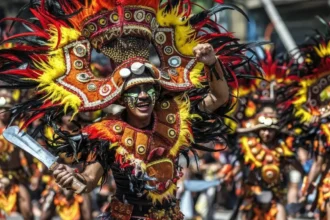For Filipinos looking to try hiking for the first time, the Philippines is a dream destination. With its 7,000+ islands dotted with mountains, hills, and coastal trails, there are countless options that don’t require advanced skills or expensive gear. Unlike climbing Mt. Apo or Mt. Pulag’s highest peaks, beginner hikes are usually shorter, safer, and can be done in a single day.
- 🌄 Top Beginner Hiking Trails in Luzon
- 🌴 Beginner-Friendly Trails in the Visayas
- 🌋 Beginner Trails in Mindanao
- ✅ Benefits of Beginner Hiking
- ❌ Common Mistakes First-Time Hikers Make
- Table: Beginner Hiking Trails at a Glance
- Frequently Asked Questions about Beginner Hiking Trails in the Philippines
- 🌱 Taking Your First Step into the Outdoors
- 🥾 References
What makes hiking here so special is the balance of challenge and reward. Even a 2-hour trek up a small mountain can lead to panoramic views of rice fields, waterfalls, or even entire coastlines. The tropical setting means the trails are often surrounded by coconut trees, bamboo groves, and the sound of birds or flowing streams. Many Filipinos recall their first hike as a bonding experience with family or barkada, with laughter and shared food making it as memorable as the view itself.
For first-timers, hiking also teaches patience, teamwork, and resilience – qualities Filipinos hold close. And because most beginner trails are close to Manila, Cebu, or Davao, they’re accessible for weekend adventures.
🌄 Top Beginner Hiking Trails in Luzon
Luzon, home to the nation’s capital, is also where many first-time hikers cut their teeth. These trails are close enough for a day trip yet rewarding enough to feel like a real adventure.
Mt. Batulao (Batangas)
A favorite among beginners, Mt. Batulao has rolling slopes and stunning ridges that are picture-perfect.
- Difficulty & Duration: Easy to moderate; 4–5 hours round trip.
- How to Get There: About 2–3 hours from Manila via bus to Nasugbu, then tricycle to the jump-off.
- Budget Estimate: ₱800–₱1,200 including bus fare, guide, and food.
- Tips: Best visited during the cooler months (Nov–Feb). Bring a hat, water, and sunscreen as the trail is exposed to the sun.
Mt. Maculot (Batangas)
Famous for the “Rockies” viewpoint overlooking Taal Lake, this hike gives some of the most iconic beginner-friendly views in the country.
- Difficulty & Duration: Easy to moderate; 3–4 hours round trip to the Rockies.
- How to Get There: Take a bus to Cuenca, Batangas; tricycles bring you to the jump-off.
- Budget Estimate: Around ₱700–₱1,000 per person.
- Tips: The trail is steep in parts but manageable. Wear shoes with good grip and start early to catch the sunrise over Taal.
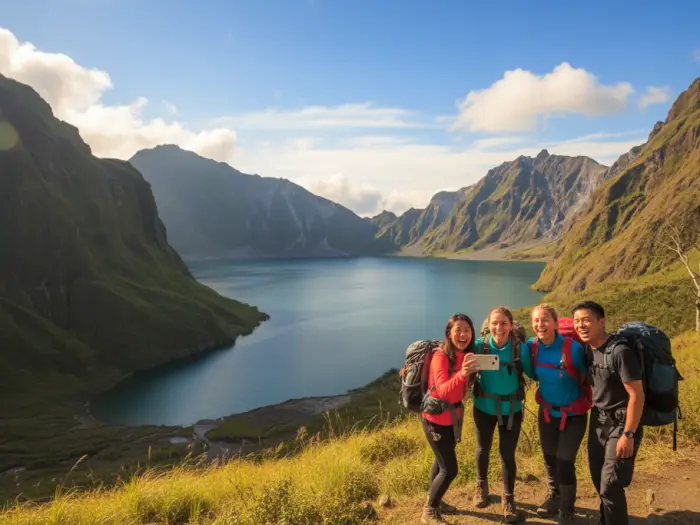
Mt. Pinatubo Crater Lake (Zambales)
One of the most unique hikes in Luzon, combining a thrilling 4×4 ride with a trek to the turquoise crater lake left by the 1991 eruption.
- Difficulty & Duration: Easy; 2 hours of trekking plus a 4×4 ride.
- How to Get There: Travel to Capas, Tarlac, then arrange for a 4×4 ride and guide.
- Budget Estimate: ₱2,500–₱3,000 including 4×4 rental, guide, and environmental fees.
- Tips: Go during dry months (Nov–May) as the trail can be closed in the rainy season.
Mt. Manabu (Batangas)
Short and family-friendly, this hike offers refreshing greenery and a taste of local hospitality.
- Difficulty & Duration: Easy; 2–3 hours round trip.
- How to Get There: From Manila, take a bus to Lipa, then a jeepney or tricycle to the jump-off in Brgy. Sta. Cruz.
- Budget Estimate: ₱500–₱800.
- Tips: Don’t miss the free kapeng barako offered by locals at one of the trail stops. Perfect for kids and beginners.
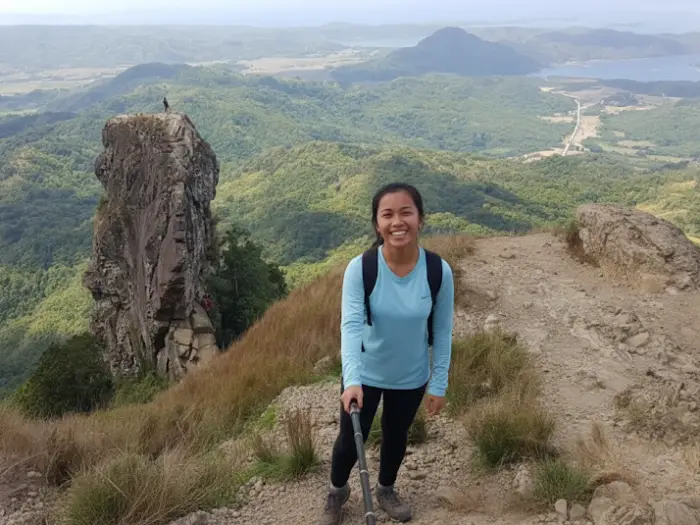
Mt. Pico de Loro (Cavite/Batangas)
Recently reopened, Pico de Loro remains a classic beginner’s hike with lush forests and rewarding summit views.
- Difficulty & Duration: Moderate; 5–6 hours round trip.
- How to Get There: From Manila, ride a bus bound for Ternate, Cavite. From there, tricycles head to the DENR registration site.
- Budget Estimate: ₱1,000–₱1,500.
- Tips: Arrive early to avoid the heat and the crowds. This is slightly longer than other beginner hikes, but very doable.
Experience Highlight
A hiker once described reaching the summit of Mt. Maculot as “a first love” – the exhaustion forgotten the moment Taal Lake’s vast waters appeared like a painting below. That’s the magic beginner hikes deliver.
🌴 Beginner-Friendly Trails in the Visayas
The Visayas region, known for its islands and beaches, also hides lesser-known hiking gems. These trails are often combined with food trips or beach adventures, making them great for well-rounded getaways.
Osmeña Peak (Cebu)
The highest point in Cebu, yet surprisingly beginner-friendly. Its jagged peaks resemble a smaller version of Baguio’s mountains.
- Difficulty & Duration: Easy; 1–2 hours round trip.
- How to Get There: From Cebu City, ride a bus to Dalaguete, then a habal-habal (motorbike taxi) to the jump-off.
- Budget Estimate: Around ₱500–₱800.
- Tips: Best at sunrise or sunset for panoramic coastal views.
Mt. Kanlaon Foothills (Negros Occidental)
While the summit is for experienced climbers, beginners can enjoy the foothill trails filled with farmlands, forests, and waterfalls.
- Difficulty & Duration: Easy to moderate; 3–4 hours round trip.
- How to Get There: From Bacolod, take a bus to Canlaon City; local transport will bring you to the jump-off.
- Budget Estimate: ₱800–₱1,200 including guide fees.
- Tips: Always hike with a guide and secure permits – the area is a protected park.
Mt. Madja-as Lower Trails (Antique)
One of Panay Island’s hidden gems, offering lush forest paths and refreshing waterfalls without needing to summit.
- Difficulty & Duration: Easy to moderate; 4–6 hours round trip for beginner-friendly trails.
- How to Get There: Travel to Culasi, Antique via Iloilo or Kalibo, then tricycle to the trailhead.
- Budget Estimate: ₱1,000–₱1,500.
- Tips: Bring swimwear and waterproof bags – many hikers cool off in waterfalls after the trek.
Mt. Hambubuyog (Southern Leyte)
A peaceful climb known for its breathtaking “sea of clouds” view during early mornings.
- Difficulty & Duration: Easy; 2–3 hours round trip.
- How to Get There: From Maasin City, take a jeepney or habal-habal to the barangay jump-off.
- Budget Estimate: ₱600–₱900.
- Tips: Arrive before dawn for the best chance to catch the sea of clouds and sunrise.
Combining Hikes with Culture
Many beginner hikers in the Visayas end their climbs with food trips – like lechon in Cebu or batchoy in Iloilo – turning the trip into a blend of nature and culture.
🌋 Beginner Trails in Mindanao
Mindanao may be known for challenging peaks like Mt. Apo, but it also offers gentle treks for those just starting out.
Mt. Capistrano (Bukidnon)
A short but scenic climb with rocky limestone formations and panoramic views of Bukidnon’s vast plains.
- Difficulty & Duration: Easy to moderate; 2–3 hours round trip.
- How to Get There: From Malaybalay City, take a jeepney to Brgy. Managok, then a habal-habal to the jump-off.
- Budget Estimate: ₱500–₱800 per person.
- Tips: Best hiked early morning for cooler weather and clearer views.
Mt. Kitanglad Foothills (Bukidnon)
While the summit is for experienced climbers, beginners can enjoy the easier foothill routes, which showcase the highland forests and farmlands.
- Difficulty & Duration: Easy; 2–4 hours round trip.
- How to Get There: Access from Malaybalay or Lantapan; local guides can arrange short treks around the protected area.
- Budget Estimate: ₱800–₱1,200 including guide fees.
- Tips: Secure permits through DENR or local tourism offices, as Kitanglad is part of a protected range.
Mt. Hibok-Hibok View Deck Trails (Camiguin)
Instead of climbing to the volcano’s summit, beginners can take shorter trails to scenic view decks with hot springs nearby.
- Difficulty & Duration: Easy to moderate; 2–3 hours round trip.
- How to Get There: From Mambajao, take a habal-habal to the Ardent Hot Springs area, where many short hikes begin.
- Budget Estimate: ₱500–₱1,000.
- Tips: Combine the hike with a dip in Camiguin’s hot springs for a relaxing end to the day.
Dahilayan Forest Park (Bukidnon)
Not exactly a mountain hike, but its forest trails are perfect for first-timers who want to experience pine-scented walks at a cool altitude.
- Difficulty & Duration: Very easy; 1–2 hours of walking trails.
- How to Get There: From Cagayan de Oro, ride a bus to Manolo Fortich, then take a van or habal-habal to Dahilayan.
- Budget Estimate: ₱1,000–₱1,500 including park entrance and transport.
- Tips: Great for families and groups. Pair the hike with zipline rides and other eco-adventures inside the park.
A Traveler’s Note
A group of student hikers in Bukidnon shared how their ₱100 “baon” bought them rice, sardines, and soft drinks after the hike. They said it was the simplest meal but the most satisfying because they earned it after the climb.
✅ Benefits of Beginner Hiking
Hiking is more than just exercise – it’s a lifestyle shift that encourages healthier habits and deeper appreciation of the outdoors. For many Filipinos, it’s one of the most affordable ways to escape the stress of city life and recharge in nature. Unlike international trips that can cost tens of thousands, a beginner hike often requires only a small budget for transport, entrance fees, and food. This makes it accessible for students, young professionals, and even families on a tight budget.
Another big benefit is physical wellness. Hiking builds endurance, strength, and resilience even for first-timers. Unlike the gym, where the focus is often repetitive movements, hiking engages the whole body while keeping your mind stimulated with scenery. Over time, even casual hikers notice improvements in stamina and lung capacity.
Hiking also strengthens relationships. Friends and families who hike together often describe the experience as bonding on a deeper level – sharing snacks, motivating each other on steep parts, and celebrating the small victories at the summit. For couples, a beginner hike can be a romantic yet adventurous date that feels different from the usual mall or café outing.
Equally important, beginner hiking directly supports local communities. Many guides, porters, and sari-sari store owners near the trail rely on hikers for income. Choosing to hike responsibly ensures that tourism benefits extend to farmers, locals, and small businesses in rural areas.
Lastly, hiking is a way for city dwellers to reconnect with nature. The sound of birds, fresh air, and green landscapes provide a much-needed mental reset. Studies show that even short exposure to natural environments reduces stress and improves mood – benefits that many first-time Filipino hikers immediately notice after their initial trek.
❌ Common Mistakes First-Time Hikers Make
While hiking is beginner-friendly, many first-timers underestimate the small details that can make or break the experience. One of the most common mistakes is wearing the wrong footwear. Slippers or thin sneakers may work for city walks, but they can lead to blisters, slips, or injuries on uneven mountain terrain. Investing in sturdy rubber shoes or affordable hiking sandals makes a huge difference in comfort and safety.
Another mistake is not bringing enough water. The tropical heat in the Philippines makes dehydration a serious risk. Beginners often think a single small bottle is enough, only to run out halfway through the climb. A safe rule is to bring at least 1–2 liters depending on trail difficulty and weather conditions.
Many beginners also underestimate the time needed for the descent. They assume going down will be much quicker, but it often takes the same amount of time – sometimes longer if the trail is slippery. This can result in being caught by nightfall, especially for late afternoon hikes. Always start early to avoid this problem.
Ignoring weather updates is another oversight. Beginners might head to the mountain without checking forecasts, only to face sudden rain that makes trails muddy and dangerous. Always monitor PAGASA updates or ask locals before the climb.
Finally, one of the biggest mistakes is leaving trash behind. Candy wrappers, water bottles, and tissue paper are often left on trails, harming both wildlife and the environment. Practicing Leave No Trace means carrying all trash back down – a simple habit that keeps trails clean and preserves the natural beauty for the next hikers. Responsible hiking not only ensures a good experience but also protects these trails for future generations.
Table: Beginner Hiking Trails at a Glance
| Mountain/Trail | Location | Estimated Time | Difficulty | Highlight |
|---|---|---|---|---|
| Mt. Batulao | Batangas | 4–5 hrs | Easy | Rolling ridges & views |
| Mt. Maculot (Rockies) | Batangas | 3–4 hrs | Easy-Moderate | Taal Lake viewpoint |
| Mt. Pinatubo Crater | Zambales | 2 hrs trek + 4×4 ride | Easy | Crater lake |
| Osmeña Peak | Cebu | 1 hr | Easy | Jagged peaks |
| Mt. Capistrano | Bukidnon | 2 hrs | Easy | Plains & rocky formations |
Frequently Asked Questions about Beginner Hiking Trails in the Philippines
- Is hiking safe for complete beginners in the Philippines?
Yes – especially if you pick beginner-friendly trails, go with friends or a guide, wear proper shoes, and check the weather. Most trails are well marked and can be done in a day, so it’s totally doable even if it’s your first time. - Do I need to hire a guide for beginner hikes?
Sometimes yes, sometimes no. Trails near cities often don’t require guides, but those farther away or in rural parts might. Hiring a guide helps with safety, local knowledge, and sometimes trail maintenance fees. - What should I pack for my first hike here?
At minimum: 1-2 liters of water, light snacks, sun protection (hat, sunscreen), and some basic first aid supplies. A good pair of hiking or trail shoes is a must. Also useful: rain gear, insect repellent, and a small daypack. - When is the best season to go hiking in the Philippines as a beginner?
The dry months – usually November through May – are your safest bet. Trails get slippery during the rainy season, rivers swell, and paths can be muddy, so avoid hiking in heavy rain or immediately after storms. - Which hikes are good for families or kids who are new to hiking?
Trails like Mt. Manabu, Osmeña Peak, and easier foothill trails are good options. They’re shorter in duration, manageable terrain, and still offer beautiful views and fun for kids without risking too much exhaustion. - How much does a beginner hike cost overall?
It depends on the trail and how far you have to travel. Generally, budget about ₱500-₱1,000 for transportation, entrance fees, food/snacks. If it’s more remote, costs can go up (transport, guide, etc.), so always check in advance. - What are some beginner hiking trails near Manila?
Mt. Batulao and Mt. Maculot (Batangas) are favorites – accessible and scenic with ridges or views that feel like you’ve really “hiked” without being overly tough. - What mistakes do beginners often make, and how do I avoid them?
Common ones: wearing slippers or thin shoes, not bringing enough water, starting too late (so you end up descending in the dark), ignoring weather forecasts, and leaving trash behind. Fix them by planning ahead, starting early, and carrying essentials. - What are the perks of choosing beginner hikes rather than big peaks right away?
Beginner hikes are less risky, less expensive, and more accessible. They also help you build stamina, confidence, and appreciation for nature. Plus, they’re great bonding experiences with friends or family. - If I want more than just a hike – like views, scenery, or culture – which beginner trails combine those?
Some great examples are Mt. Pinatubo (for the crater lake), Mt. Maculot (for the Taal Lake view), Osmeña Peak (ocean or highland meets sky vibes), and the foothill trails of Bukidnon. These give you more than just a climb – they give you scenery, local flavor, and memorable views.
🌱 Taking Your First Step into the Outdoors
The Philippines’ beginner hiking trails prove that adventure doesn’t need to be extreme to be life-changing. For many, the first hike becomes the gateway to a healthier lifestyle, deeper appreciation of nature, and stronger connections with people. It’s not just about reaching the summit but also about the laughter on the trail, the shared snacks under a tree, and the small victories of pushing your limits.
So if you’ve been hesitating, consider this your sign: lace up those shoes, pack your water bottle, and step onto the trail. The mountains are waiting – and they’re kinder than you think.
🥾 References
-
TripAdvisor – 10 Best Philippines Hiking Trails (2025)
-
Guide to the Philippines – Hiking in the Philippines: Everything You Need to Know
-
TripZilla – 10 Beginner-Friendly Hiking Trails in the Philippines
-
Trail Adventours – Beginner Philippines Hiking (Tours, Tips, Mountains)
-
OCarra Media – Easy & Scenic Hikes in the Philippines for Nature Lovers
-
Nomadic Experiences – 5 Easy Hikes in Luzon with Gorgeous Views



